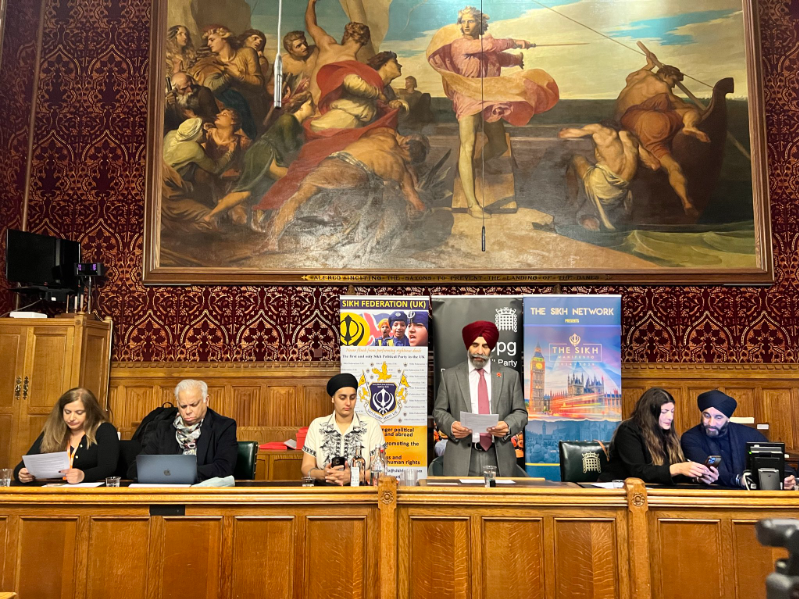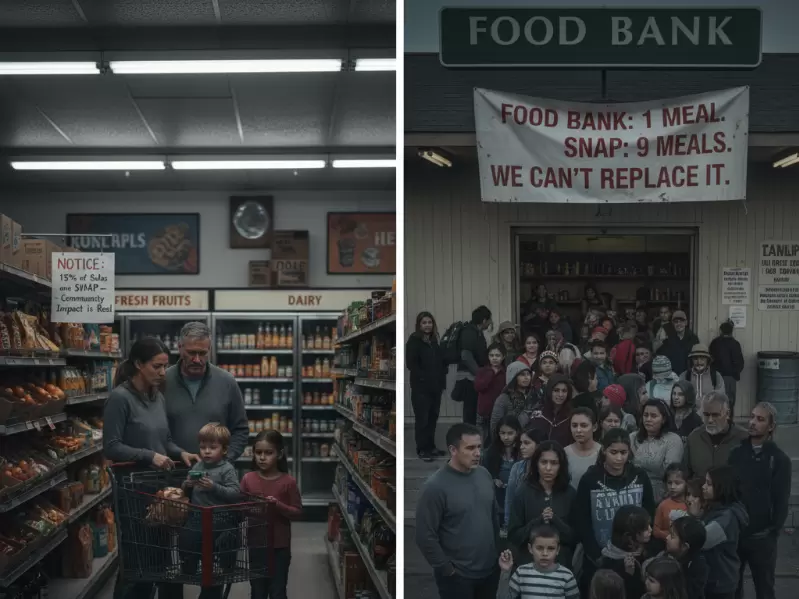California reeling under immigration crackdown unleashed by Trump administration
Trump's deportations would remove $275B from California’s economy.
 Masked law enforcement officers, including HSI and ICE agents, walk into an immigration court. / REUTERS/Caitlin O'Hara/File photo
Masked law enforcement officers, including HSI and ICE agents, walk into an immigration court. / REUTERS/Caitlin O'Hara/File photo
Since his first term, President Donald Trump has often clashed with California. On June 27, 2025, American Community Media’s expert panel met to examine California’s response to, and discuss strategies for, effective resistance in the face of Los Angeles protests and arrests by Immigration and Customs Enforcement (ICE). Trump's deportations would remove $275B from California’s economy.
California’s large immigrant population and protective laws have made it a frequent target
In Los Angeles, escalating tensions surrounding immigration enforcement led to a significant standoff between the city and the Trump administration. Immigration raids, perceived as aggressive, triggered widespread protests and ultimately resulted in the deployment of the National Guard and Marines. This series of events culminated in what was described as the largest single-day protest in U.S. history.
A third of California’s prime working-age population is made up of immigrants, including immigrants in the country without authorization. That latter group represents roughly a tenth of the state’s workers. California workers living here without legal authorization fill jobs that few legal residents want. Most of the undocumented workers in California have been here for a long time, an average of 15 years. These are people integrated into the economy of California and many have children who are American citizens.
In California, immigrants collectively contribute $23 billion each year in taxes to federal, state, and local governments, with undocumented workers each paying an average of $7,000 in annual taxes.
These hard-working members of California’s workforce are being accosted in parking lots by plainclothes men and locked up with no recourse to an attorney. Antonio Villaraigosa, former LA Mayor and Gubernatorial hopeful said, “ICE targets certain people. They find out where they are through the DMV, or maybe other agencies. Can California do something to stop that? What can the state of California do to limit their access?”
Denied access
Jeannette Zanipatin, Director of Policy and Advocacy at the Coalition for Humane Immigrant Rights (CHIRLA), was denied access to her clients once she had managed to locate them. “We were unable to have access to anybody who was detained immediately after the raids. Three days after the raids started, I went with congressional members who have oversight of detention centers, yet we were denied entry to the central detention center in Los Angeles,” she said. “They deny attorneys access to clients before their clients get deported to third countries!”
“Ninety-three percent of folks that have been detained do not have a serious or violent offense,” she said. “Sixty-five per cent of folks have no criminal convictions. The rhetoric that we hear from this administration that they're going after criminals and really bad people is really in question.”
Terrorized people have put their lives on ice
Panelists raised concerns about the potential for individuals to be detained during routine check-ins with Immigration and Customs Enforcement (ICE) or at United States Citizenship and Immigration Services (USCIS) interviews. “People now have to decide whether to go to their appointments and risk deportation or risk getting picked up and arrested by ICE enforcement,” said Zanipatin.
“Folks are afraid to take their children to school, to go to medical appointments, to go to places of worship, to go and get groceries for themselves and their families, to go to work. Individuals are just afraid to go anywhere in Los Angeles. There are certain neighborhoods where you barely see anybody.”
Youth, who are US citizens, are being advised by their parents to carry their birth certificates and passports. “People who look like us are getting picked up. No questions asked.”
Who are these ICE agents?
Immigration and Customs Enforcement (ICE) has been criticized for their lack of transparency. ICE officers conduct operations in plain clothes, without readily identifying themselves or displaying badges. They sometimes use unmarked vehicles, which contributes to public confusion and fear. The ambiguity surrounding the identity of these individuals has also raised concerns that they may be private citizens or even bounty hunters.
“Masked men and women are approaching folks in very aggressive and violent ways as ICE agents. They don't have any identification or badges. Their faces are covered, and in some cases, they have been seen changing the license plates of their cars. We just don't know who these individuals are?” she said.
Criminals are impersonating as ICE agents and engage in harassment, theft, extortion, assault, battery, sexual assault, and kidnapping. This poses a significant threat to public safety and further erodes trust in law enforcement.
“We are seeing a lot of license plates from out of state, from places like Louisiana and Texas, so in some instances it may be that they arr deputizing law enforcement entities from other states to come in and help them do some of the enforcement. But in other instances, again we just do not know., When asked to identify themselves, they are just not identifying themselves.”
“We do know, in many instances, they are not providing any warrants.”
The immigration crackdown could remove 1.5 million, or 8 percent, of California's workforce, which is expected to harm small businesses and potentially devastate entire industries, including agriculture, according to research by the Bay Area Council Economic Institute and the University of California, Merced.
A new law is being introduced in California that would require immigration agents to identify themselves during enforcement actions. This is one step in addressing the lack of transparency in some operations.
ADVERTISEMENT
ADVERTISEMENT
E Paper
Video



 Ritu Marwah
Ritu Marwah 












Comments
Start the conversation
Become a member of New India Abroad to start commenting.
Sign Up Now
Already have an account? Login